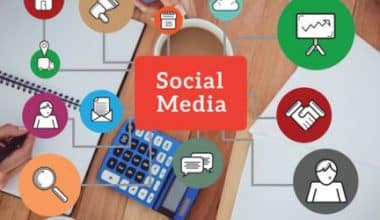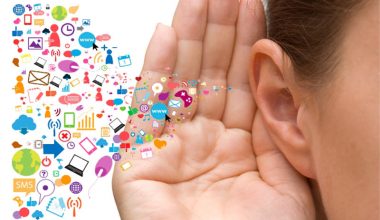Have you noticed the quick responses on most social media pages? It feels as if they already know your thoughts. How about they give you appropriate options immediately after you chat with them? Or guide you to the perfect answers to your questions. With quick response, perfect solutions, and suitable alternatives, B2B Chatbot makes all these possible, so you do not have to be surprised.
A report I found while researching shows that 60% of companies use a B2B chatbot to automate tasks. But there is more, and to give you an idea of what this actually looks like, we will go over 8 examples of B2B chatbots and all you should know.
Key Points
- In the vast realm of technology, chatbots are reciprocal software applications that interact online with users through text or spoken language.
- Chatbots help customers receive responses faster. It is difficult for humans to compete with a computer’s lightning-fast processors, which can scan through many keywords in the twinkle of an eye. Because of this, bots are extensive in your knowledge base extension.
- B2B chatbots encourage dynamic discussion between users and the pieces of information they seek.
- B2B chatbots provide customer service by joining with all customer support platforms. They also can take care of all customer questions, and give rapid responses and resolutions.
What is a Chatbot?
A chatbot is a software that imitates human discussions, mostly through text or voice communication. There has been an increased use of chatbots by users in business-to-consumer (B2C) and business-to-business (B2B) situations when handling small tasks. Chatbots help organizations always provide adequate customer service and make better use of staff support time. It will also reduce costs.
Chatbots are not only simple models that function off of scripts to answer particular questions quickly; they are also artificial intelligence (AI) and machine learning (ML) models that communicate with users and finish more sophisticated work. Chatbots can also mimic both spoken and written human conversations.
A chatbot may lead you to ask questions and explain a problem, and it will choose whether to explain more to you for understanding or it will just give the answers. Some will only answer the questions already asked, while others are complex and study things about you and always assist better subsequently.
How Chatbots Work
How a chatbot works depends solely on the type. The first chatbots were mainly interactive FAQ programs that relied on a set of questions with existing answers. Traditional chatbots were not able to understand ambiguous questions or give answers to simple questions, that developers hadn’t predicted yet.
Over time, customers were able to express their questions conversationally, and chatbot algorithms are capable of more difficult programming that is rules-based and can process natural language. Because of this, there was the rise of a new type of chatbot that is aware and has a machine learning ability that will optimize its ability to process and predict queries correctly by exposing it to highly human language.
Furthermore, for discerning the definition of open-ended user input, and overcoming problems in translation and typing, modern AI chatbots use natural language understanding. The meaning of the particular “intent” that users need the chatbot to decipher and the formulating of appropriate responses by using conversational AI are the things that advanced AI will map out.
However, the complexity, and advancement of large language models led to an increase in customer satisfaction and a more enhanced chatbot.
The duration for setting up an AI chatbot varies due to the technology stack, tools, expected features, data availability, platforms, etc.
Importance of Chatbots
Questions were constantly overflowing our sales, and customer representatives were always exhausted. A lot of effort was being made, but the satisfaction of our clients was not good. We looked for ways to correct these changes without sacrificing our level of care. We were skeptical when we thought about using a chatbot in our B2B business. It was very stressful to handle a compound business relationship with a computerized system. The fear disappeared when we started seeing the advantages of chatbots as we used them.
Therefore, beyond the imitation of human conversations, chatbots are important in so many ways. Here are some key points:
- Chatbots help users get information by responding to queries and requests quickly through text, audio, or both without any human interference.
- Chatbot technology has circulated everywhere, from home and consumer-facing instances of SMS, Facebook, and WhatsApp to messaging applications in the workplace. “intelligent virtual assistants or virtual agents” use complex language models to understand easy-flowing discussions and can also mechanize appropriate tasks. Adding to intelligent virtual assistants that are consumer-based, like Amazon Alexa, Google’s Gemini, Apple’s Siri, and OpenAI’s ChatGPT, there is an increase in the utilization of virtual agents for the idea of helping customers and employees.
- Chatbots help to enhance the capabilities of apps already in use. A well-orchestrated chatbot can be amalgamated into the software an organization is already using. For instance, as a tech firm, we added a chatbot to the Microsoft team to build and customize productive hubs where content, tools, and members will come together to collaborate, meet, and discuss.
- Enterprise-grade chatbots can be fused with vital systems and organize workflows inside and outside of a CRM system, which will allow a brand to make use of its existing data. Chatbots have the power to handle actions ranging from simple to intricate, multi-step actions involving many applications. Additionally, natural language conversations, that is between customers and businesses via chatbots and virtual assistants, can be analyzed, and insights extracted by using conversational analytics.
- The development of conversational marketing strategies can benefit from the application of artificial intelligence. Adding to the provision of 24/7 customer care, AI chatbots can uncover pieces of information from your customers’ participation and buying framework. Also, it delivers harmonized and customized digital experiences across your web and messaging platforms.
Types of Chatbots
Types of chatbots are determined by their capabilities. Here are some types of chatbots:
- Menu/button-based chatbots
- Linguistic Based (Rule-Based Chatbots)
- Keyword recognition-based chatbots
- Voice bots
#1. Menu/Button-Based Chatbots
Menu or button-based chatbots are the basic kind of chatbot that enables users to communicate with them just by clicking on the button option from a compiled menu that speaks about their needs. These chatbots work like a decision tree.
Although they give simple service and also help in answering repeating questions of users. These chatbots do find it difficult to function effectively, especially when faced with more subtle requests because they are narrowed to pre-established answer options. It takes this chatbot a lot of time to understand customers’ needs because of the several repetitive menu buttons they will go through. Also, the chatbot becomes useless when the need of the customer is not enlisted as a menu option because the chatbot doesn’t allow a free text input field.
#2. Rules-Based Chatbots
This chatbot uses conditional if or logic to start up a conversation automation flow. The rule-based chatbot functions as an interactive FAQ where a designer programs pre-established combinations so the chatbot can understand the user’s input and respond correctly. These kinds of chatbots are so easy to teach and work well when pre-established questions are asked because they operate on the detection of basic keywords. However, this chatbot falls short when faced with sophisticated questions just like the menu-based chatbots.
#3. Keyword Recognition-Based Chatbots
This type of chatbot listens to what users type and replies accurately unlike the menu-based chatbots. This chatbot uses personalized keywords and Natural Language Processing (NLP) to decide how to serve the right reply to the user. Also, they fail to meet expectations when they respond to many questions that look alike. This chatbot starts slipping when there is keyword repetition between many common questions.
It is quite famous to see chatbot examples that are a mix of keyword identification-based and menu/button-based. Users can ask their questions directly.
#4. Voice bots
A voice chatbot allows users not to communicate with the bot through text but through voice. Several voice chatbots can be essential. Some interactive voice response technology users have come in contact with might have frustrated them, especially if the system can’t recover the pieces of information a user is looking for. However, this chatbot is growing with artificial intelligence.
AI-powered voice chatbots use text-to-speech and speech-to-text technologies, which provide the same complex characteristics as AI chatbots. Voice chatbots understand spoken questions, evaluate the business requirements of their customers, and informally give relevant answers because of natural language processing and technology integration. These attributes can reduce wait times, improve rates of call resolution, and enhance user engagement and satisfaction.
Furthermore, a voice chatbot is a faster and more practical way of communicating since it is easy to get a quick answer without texting.
Read Also: Emoji Marketing Trends: How I Use Emojis in Digital Marketing Campaigns in 2024
What is a B2B Chatbot?
A B2B chatbot is a software application mainly utilized for customer communication and customer service delivery tasks. It uses artificial intelligence technology to promote interaction between brands and their customers. Real-time participation can be organized by joining B2B chatbots on numerous digital platforms, including messaging applications, business apps, and websites. They make voice or text-based user conversations simpler.
B2B chatbots also comprehend queries and give pertinent answers easily. They automate many business procedures. B2B businesses effectively meet their client needs by using chatbots to improve customer experiences and solve customers’ needs. A B2B chatbot is a typical middleman.
A B2B chatbot enhances communication between a buyer and a seller, in contrast to ordinary chatbots that concentrate mainly on giving broad information. B2B chatbots help in marketing, 24/7 customer service, and relieving staff of workload so they can pay attention to other crucial aspects of the organization.
Read Also: 8 Innovative Training Strategies You Must Consider for New Employees
Benefits of Using B2B Chatbots for Business
Can you visualize the solace our sales representatives had when their focus was mainly on tactical planning and one-on-one encounters with customers rather than the many calls and emails they were handling? I remember vividly the happiness on everybody’s face when the B2B chatbot was introduced. All of us were taken aback by how the bot answered numerous questions in a second. Truly, a burden was lifted from our shoulders.
Furthermore, B2B (Business-to-Business) chatbots are a useful tool for any business that wants to innovate and improve their relationship with clients. They can improve operational efficiency and customer service. There are a whole lot of benefits businesses can get from using B2B chatbots
#1. Lead Generation
A chatbot for B2B is a very great tool that can create potential leads while customers read through the work on your website. For instance, an AI chatbot focused on sales can ask important questions of visitors to the website, determining their interests and helping them narrow down their choices. It is important for the early stage of lead generation for B2B bots to remove the urge for people to go through extraneous information.
#2. Improved Customer Experience
A B2B chatbot does not sleep or rest, unlike humans. Therefore, it can assist visitors to the website around the clock. This improves the experience of customers since they will no longer wait for live representatives. If a visitor asks a complex question, the B2B bot sends it to a live representative for better clarification.
#3. Lead Fostering
For the transformation of potential leads and people interested in your products, into paying customers, a B2B chatbot plays a very important role. Are you thinking about how this happens? Anyway, it just entails asking them relevant questions and taking feedback through each customer’s journey.
#4. Data Mining
In addition, the B2B scenery is so big that humans cannot deal with such big data. It requires a lot of time to manually go through, arrange, and evaluate this data to understand what customers need. However, a B2B chatbot can automate the whole data mining process.
This automation doesn’t stop at data mining, and that makes it beautiful. A B2B chatbot will always help human staff map out data, and join it with the unfolding trends within the market.
#5. Employee Productivity
A B2B chatbot also helps to improve the productivity of employees by automating many time-consuming vital areas ranging from marketing, sales consultation, customer service, etc. A B2B chatbot makes the process of getting data from databases easier. It also makes information more reachable for employees.
#6. Saves Cost
However, using B2B chatbots reduces the need to hire additional customer representatives. Consequently, businesses can save money that would have been used for recruitment, training, and salaries.
Read also: How Many Backlinks Per Day Is Safe for Your Website? A Detailed Guide
B2B Chatbot Examples
For the improvement of sales and customer service, B2B companies use chatbots powered by Conversational AI. They provide customized experiences. Let’s see examples of B2B chatbots that display the power of conversational AI in many industries.
#1. LeadBot by Drift
This is a good example of the way conversational AI can streamline lead generation. Through the engagement of website users in a real-time discussion, LeadBot takes information from users, determines leads, and plans sales meetings. It also removes the filling of forms and improves the process of lead conversion.
#2. Zendesk’s Chatbot
This automates the support of customers through the provision of immediate replies to FAQs. The bot solves issues proficiently and decreases the wait time of users by analyzing questions from customers and using a knowledge base. It effortlessly transfers sophisticated questions to human customer representatives when necessary.
#3. HubSpot’s Chatbot
This chatbot takes personalization to another level. This chatbot establishes a customized experience for website users. It spots returning users, gives unique content recommendations, and also recommends important products based on their past interactions.
#4. Shopify’s ShopBot
Shopify’s ShopBot enhances e-commerce experiences by helping customers in the buying journey. It comprehends natural language questions, gives product suggestions, and also assists with tracking orders and returns. This chatbot makes sure that B2B customers have a seamless shopping experience.
#5. Watson by IBM
IBM’s Watson Assistant is a chatbot that provides structured IT support. It helps users regulate regular technical issues, provides helpful tickets when needed, and it also gives self-support resources. This chatbot makes it possible for businesses to minimize IT assistance costs and enhances user satisfaction.
#6. Clare.ai
Clare.AI transforms the transaction process by automating lead nurturing and qualification. It involves leads through customized interactions, takes important data, and plans meetings with sales representatives. It also helps B2B companies weigh their sales efforts.
#7. Oracle Supply Chain Chatbot
This chatbot smooths chain management processes. It gives inventory levels, shipments, and delivery schedules information that is in sync. Using this chatbot, users can track orders, and solve any problem quickly, which improves an efficient supply chain.
#8. Eva by HDFC Bank
Helping customers with banking inquiries is the main job of this chatbot. It enables customers with balance inquiries, money transfers, and payment of bills and provides customized financial advice. It also makes it possible for customers to have a joyful and efficient experience in the financial sector.
Final Thoughts
There has been a transformation in the way businesses communicate with their customers since the emergence of B2B chatbots. They provide numerous advantages that help businesses grow and excel in a competitive market. Do well to include a chatbot in your business.
Frequently Asked Questions
Is ChatGPT a Chatbot?
Yes, ChatGPT is a chatbot and also a virtual assistant. It was developed by OpenAI and they launched it on 30th November 2022
What Is the Difference Between a Bot and a Chatbot?
Chatbots have a natural language understanding (NLU) engine. Chatbot understands a wider range of languages than bots and this makes them interact well with users.
Can a Chatbot Be Created for Free?
Yes, you can. All you need to do is for you to start a chatbot trial and set up an account to create a bot without even coding. Through the generation of feedback found on your site and other personal resources, an automatically trained bot acts on it.
Do Whatsapp Business Have Chatbot?
Currently, Whatsapp business do not have a chatbot. The API of Whatsapp business is made available for businesses to use. It requires an agreement with a Whatsapp Business Solution Provider which you will pay for.
Related Articles
- Understanding Incoming Mail Server: Tips for Small Business Owners
- 15 Creative PR Email Templates to Boost Your Outreachs Success ( Plus Tips on Writing One)
- Top Paid Media Tips to Explode Your Business Growth






